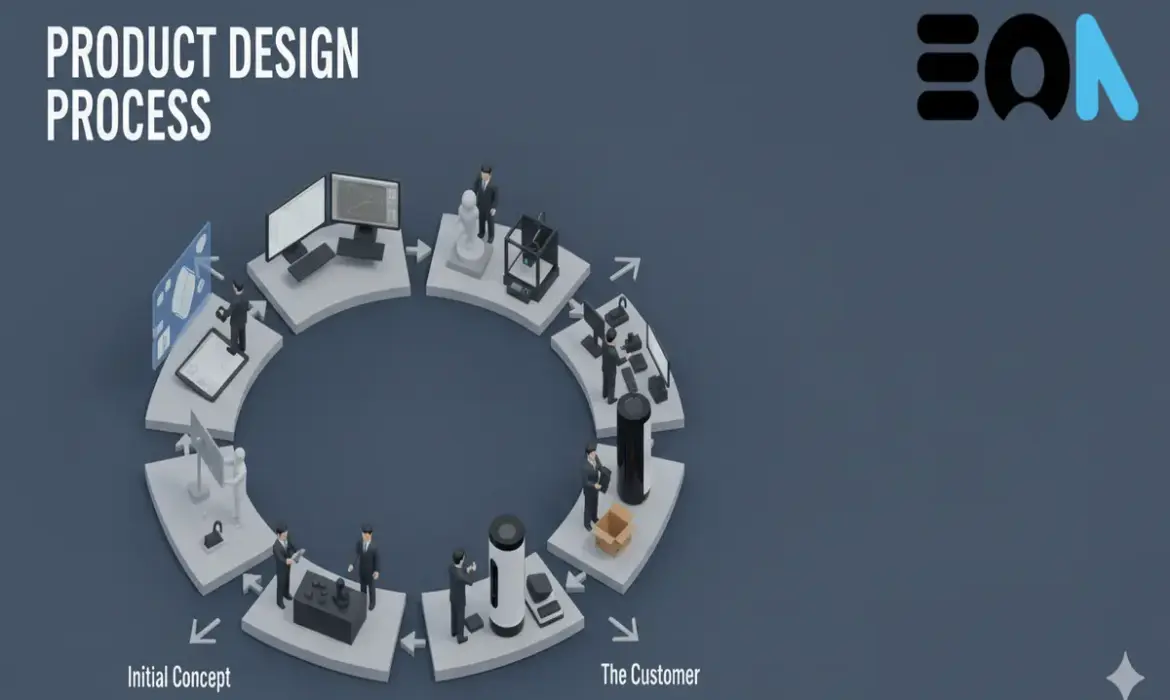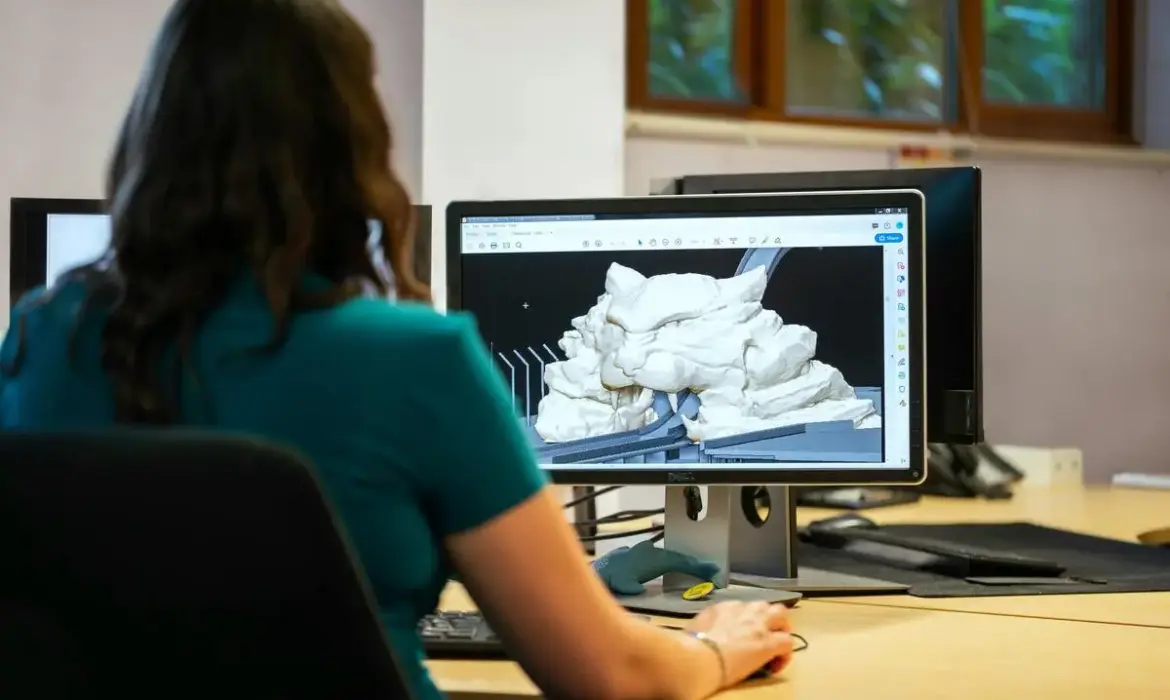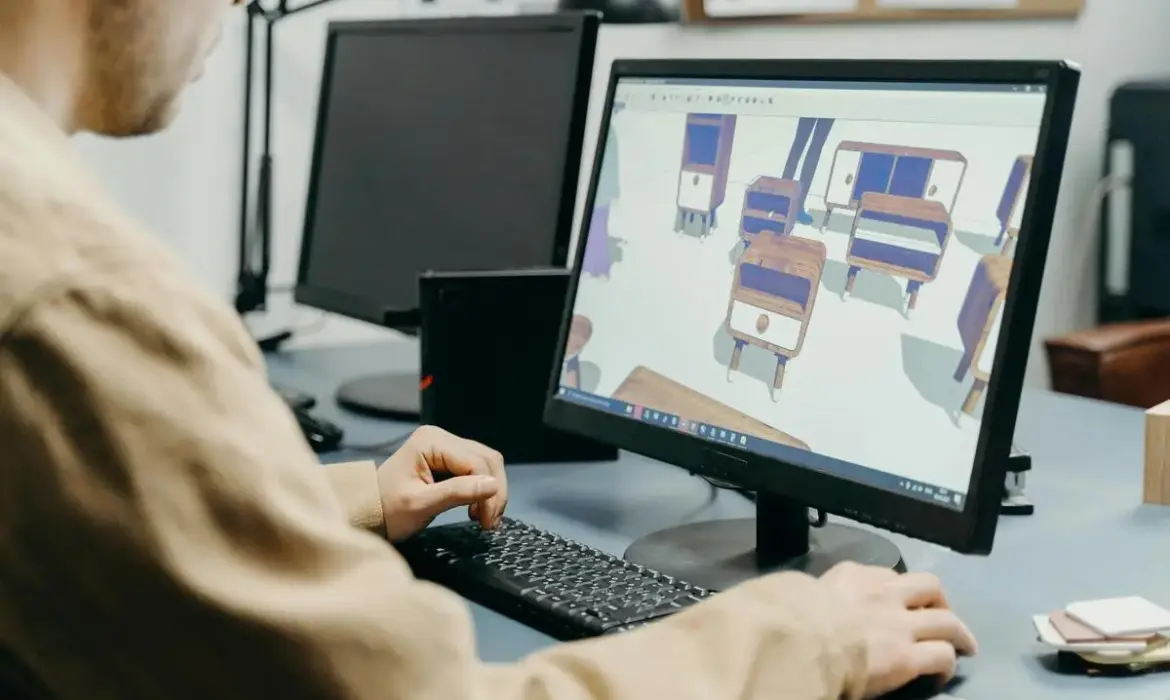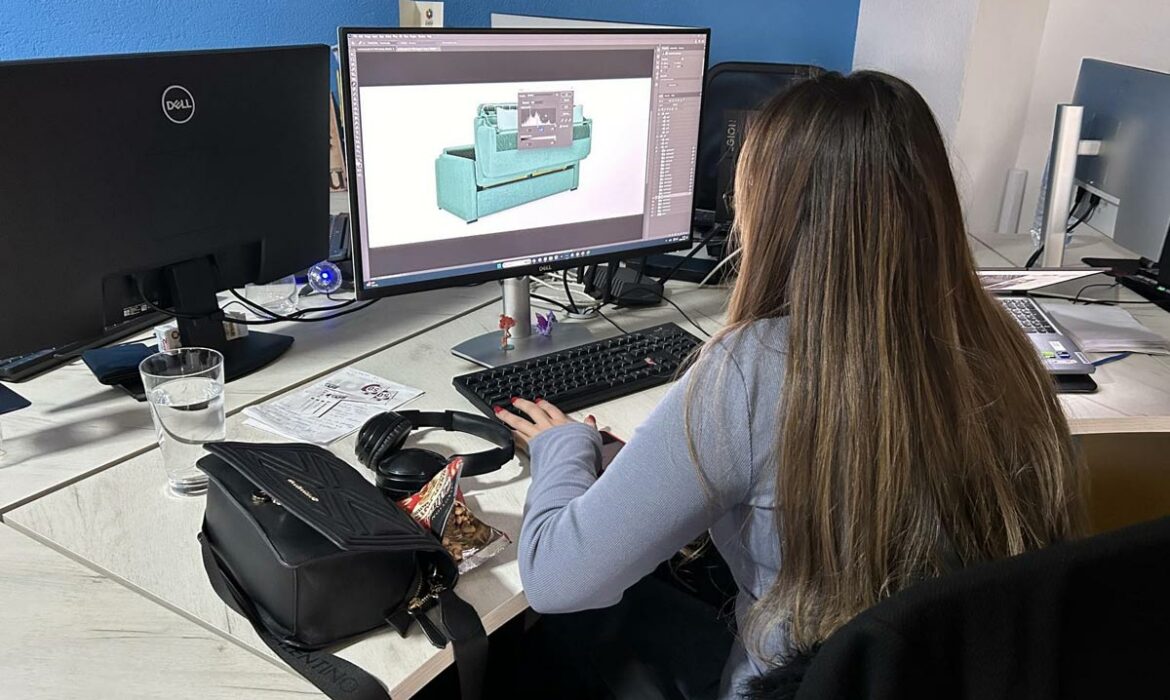How 3D Animation Services Bring Your Products to Life
You have a brilliant product idea, but you don’t know how to bring it to life besides taking a few photos of it from different angles. Sometimes, even that seems like a waste of time and money, especially if you have to do it after every new prototype.
But instead of sticking to the same old photos and videos, you can try a more innovative approach: 3D product design
3D Product Design: From Concept to Customer
You have a brilliant product idea, but you don’t know how to bring it to life besides taking a few photos of it from different angles. Sometimes, even that seems like a waste of time and money, especially if you have to do it after every new prototype.
But instead of sticking to the same old photos and videos, you can try a more innovative approach: 3D product design
3D Rendering Services: How to Showcase Products Like a Pro
Have you ever wished you could see exactly what your new product would look like without waiting for it to be physically made or organizing a photoshoot?
Well, thanks to advanced technology and 3D rendering
How 3D Product Modeling Gives Your Business a Competitive Edge
In today’s day and age, every scroll reveals another brand, another product, another “must have.”
With so much going on in every industry, how do you stand out?
We asked ourselves that question not long ago, and it led us somewhere unexpected: 3D product modeling.
We are at the Web summit
Why You Shouldn’t Sleep on Digital Billboard Advertising
People don’t want to see your boring static billboard ads anymore.
They’re used to it. They see it everywhere. They’re tired of it.
And to be honest, they don’t even care about what you’re telling them (or trying to sell to them) because they’re too busy falling asleep from looking at your ad.
Yet, it seems most companies still haven’t gotten the memo. Did your 1995 fax machines finally give in?
Statistics report that static OOH channels can’t even grow half as fast as digital ones, so you’d be right to question why many businesses look the other way.
But with so many owners still stuck in the stone age, there’s many an opportunity to stand out. If you’re willing to invest in digital billboard advertising, that is. And in the last few weeks, this is an area we’ve put time, sweat, money, and some tears into, so we know a thing or two. Turns out, you’re not just born into a wealth of knowledge about digital billboards, even if you work in marketing.
But we did get many great digital ads out there, so it’s worth it.
Itching to know more?
Let’s break it down.
How Are Digital Billboards Different From Traditional?
Well, they’re digital. It’s right there in the name. Next question!
We jest, we jest.
Digital billboards are the fun, younger sibling of static billboards. They’re bright, dynamic, and constantly evolving. They can display multiple messages in rotation, change content remotely in real-time, and even interact with viewers through sensors and mobile integration (but this costs a pretty penny).
Now, we don’t want it to seem like we’re throwing shade at static billboards. Well, we are, but we acknowledge they have their charm, too. Hey, we still create many for our clients, so it’s not like we’re saying you should stop using them entirely.
We’re just saying that comparing static and digital is a lot like comparing a flip phone to a smartphone. Sure, they both make calls, but one does a whole lot more and looks way cooler doing it.
Benefits of Digital Billboard Advertising
As you probably already guessed, there are many advantages of advertising on a digital billboard. Attention spans are getting shorter and shorter, so it takes much more effort to capture that attention from people who are very selective about who they give it to.
But here’s how digital billboard advertising can help your business:
No Printing Costs
If you’re tired of dealing with the hassle of printing on giant vinyl sheets and the headache of manual installation, it’s time to say goodbye to your static billboard ads. Digital billboards ditch the old-school printing routine and save you a ton of cash. Plus, they eliminate the trouble of dealing with physical materials.
Just upload your content digitally (your agency does this for you) and see your ad in the wild. It’s like magic, but better.
Stronger Impressions
Vibrant animations and video loops are the kind of attention-grabbing spectacle you get with digital billboards. And that’s the kind of spectacle that turns heads and prompts conversations. A digital billboard refuses to be ignored, and you’ll find yourself unwilling to look away.
Quick Change of Content
Blink and you’ll miss it – that’s how fast you can update your content on digital billboards. You’ve already bought your ad space, so you can now respond to a sudden trend, announce a flash sale, or just change your ad after it’s run its course. Digital billboard advertising lets you switch things up at a glance – pure, unadulterated flexibility at your fingertips.
Customized Schedules
With digital billboards, you can be the master of your own destiny and find the people who are most likely to want what you have. Want to target morning commuters? Done, now your ad shows up only in the morning. How about advertising a promotion only on Wednesdays? Easy.
With customized scheduling options, you can tailor your ads to specific times of the day, days of the week, or even weather conditions. A whole new world of advertising!
Finishing Thoughts
So there it is – the benefits of digital billboard advertising laid bare for all to see.
Now you can see they’re not just billboards – they’re powerhouses.
So, the next time you’re looking to make a splash with your marketing efforts, remember: go digital or go home. Or call us, whichever works best.
What Are the Benefits of 3D Modeling for Businesses?
We’ve said it before, but we don’t mind saying it again – we’ve been working with some of the most prominent furniture manufacturers in the region for years now.
Some days, it feels like we’ve lived a few lifetimes.
But these collaborations revealed a new potential for us – 3D modeling. We have a whole blog post about why we, a marketing agency, started 3D modeling, something that’s not obviously marketing (but it very much is). Despite the production and sales process getting digitalized left, right, and center, we still get probed about the time we spend 3D modeling furniture and how that’s helped our clients.
So let’s talk about why we do it and what it’s done for us.
The Great Things About 3D Modeling
We get it, it’s a new(ish) concept, and you’re skeptical. But we’ll keep on doing it because:
It Saves Time
Does your team still build an entire product, cross their fingers, and then realize it’s a dud? That may not be horrible if you’re working with small products. But, if you’re in the furniture industry, it can set your production and launch back months. With 3D modeling, we can tweak and twirl things and slash the time it takes to get the perfect design. Plus, you’ll virtually eliminate those trial-and-error headaches. You’re welcome.
It Makes Fantastic Prototypes
It just makes sense, doesn’t it? You can visualize your creation before spending a dime on manufacturing. It’s like you can see the future – the bed would be too bulky, the chair wouldn’t go with that dining table in a set, etc. With 3D modeling, your business won’t have to invest in creating costly physical prototypes – it’s all digital. Maybe it’s time to add ‘manufactures furniture’ to the CV…
It Saves Money
We know you business owners will love this one! If your agency can prototype and experiment with your product digitally, you won’t have to shell out big bucks for physical trials. Traditional prototyping involves not only the cost of materials but also the labor-intensive process of physically building the product. 3D modeling won’t make your accountant sweat bullets because the development process is leaner, faster, and cheaper.
It Allows for Customization
We’ve heard it loud and clear from our clients – generic solutions are out. Nowadays, every business wants tailor-made solutions and custom features to stand out. Well, 3D modeling can do just that – offer you a customized solution with a few clicks. Imagine you’ve got a design on the screen, and something doesn’t quite sit right. With 3D modeling, you’re not stuck with a ‘take it or leave it’ scenario. You can change it. And then you can change it again. Sure, it might test the patience of the designer, but they knew what they signed up for, right?
It Makes for a Great Online Presentation
As we said, a good 3D render can show the product from multiple angles. This experience mimics the way a buyer would inspect a product before purchasing it in the store. While they can’t touch it, they can see it in a dynamic environment – rotate it, zoom in, and scrutinize every detail. After all, you wouldn’t buy a shirt without checking if it has an open chain back, would you? That’s exactly how your customers feel when they can only see your product head-on. Digitally though, customers can visualize the product because the renders are exceptionally lifelike.
It Boosts Sales
A survey conducted by The Harris Poll reveals that 60% of online shoppers are more likely to buy a product if they see it in 3D or augmented reality (AR). Online shopping is quickly becoming our ‘default’, so visualizing the products you’re buying is crucial. This is a testament to the power of giving your consumers a closer look at your products without hauling them to your physical store. In the end, you must make the experience smooth. Don’t make your customers jump through hoops to buy your product. We’re all getting lazier anyway!
Why Our Marketing Agency Started 3D Modelling
You know, marketing agencies are a dime a dozen.
And more often than not, they’re all the same. With the same services, the same offers. Heck, even the same prices.
We could’ve stuck to the same-old, same-old, too. God knows it would’ve been easier.
But following the sheep is just not our thing. We’ve never been content with blending into the crowd. So, we made a decision to start doing something that no other agencies around us were – 3D modelling.
We raised a few eyebrows. But where’s the fun without it?
Ready to find out how this came to be?
Well, we’re telling you anyway.
What is 3D modelling?
Let’s break it down in the simplest terms possible.
3D modelling is digitally sculpting objects and spaces in three dimensions. If you want it even simpler, it’s when someone creates a visual representation of real-life items or scenes that allow you to rotate, zoom in, and interact with on a screen.
Now, if you’ve read a thing or two about our agency on this site, you’ll know that we’ve got long-standing working relationships with some of the best furniture manufacturers in the country. We create their marketing materials, run their online stores, and engage their customers. But from 2023, we started 3D modelling their furniture for easier visualization.
We got tired of calling it a day after a standard photoshoot of a chair or a table. We wanted potential customers to spin the furniture around, zoom in on it, and picture it in various settings.
Sounds intriguing? We thought so too. And that’s why we took a deep dive.
Why It Makes Sense for Our Agency
Why It Makes Sense for Our Agency
So, you know that we don’t play it safe. But there’s a method to our madness, and it all comes down to why 3D modeling made perfect sense for EON.
We Work With Furniture Manufacturers
Some of the most prominent furniture manufacturers in the country were our very first clients. After working with a few of them over the years, we saw the untapped potential in the industry. Online furniture shopping in the region was growing by the minute, but the customers still went in-store to see the products set up before buying.
We thought we could reduce the length of the process by helping buyers visualize their purchase in their space.
We Love a Challenge
Many associate 3D modeling with architects. But since we can’t legally claim to be ones, we had to settle for the next best thing – using our graphic design team. So, it wasn’t just about seizing a market opportunity.
For better or worse, we’re a bunch that thrives on challenges. We don’t accept limiting beliefs. The status quo? We don’t know her.
3D modeling pushed the boundaries of what was possible in marketing and what we thought we should be doing. It was too tempting, we couldn’t help but jump.
We See Potential for Growth
We’d go stir-crazy if we just stayed put. Our team saw the potential in 3D modeling to grow our skills and help the furniture manufacturing industry as a whole by cementing the importance of a webshop and digital visualization. It’s a dynamic, ever-evolving field and a playground for inspiration.
This is not your run-of-the-mill job. With a myriad of tools and innovations sprouting up year after year, it keeps our team on their toes and sustains our enthusiasm for longer.
3D modeling was the highlight of 2023.
Today, our 3D team consists of just a handful of people, but our doors are always open for young starry-eyed talents that can propel us even further. We love that 3D modeling has grown into a full-time position at EON and we’re ecstatic to see where it could lead us.
We promise we’re not switching industries. But we might be expanding…
Your Company Is Using LinkedIn Wrong and This Is Why
Are your LinkedIn followers more interested in watching ants run on the ground than reading your posts? Are you actually wondering if LinkedIn has it out for you?
Well, sorry to break it to you but it’s not LinkedIn’s fault your posts are flopping. It’s yours. Tough pill to swallow, I know.
For many companies, LinkedIn is an untapped goldmine. It can draw in potential clients, partners, and opportunities. At the very least, it helps you build authority and share your thoughts on trends in your industry.
But even though there are over 875 million members and more than 58 million companies on LinkedIn, only 1% are using it effectively. And you can be one of those.
Get reading.
Why Your Company Posts Are Duller Than a Butter Knife
Here, I’ll dissect why your posts make people yawn. But I’ll also give you some tips to make sure your posts start sizzling with personality.
So, this is why your LinkedIn followers don’t like your posts:
People Don’t Trust Companies
These days, people don’t like being on the receiving end of corporate sermons. Trust in companies has been in a gradual decline for a while, and the game has shifted towards building authentic connections.
But here’s the thing – how can a faceless company build genuine connections?
Well, that was a rhetorical question. It can’t. A corporate entity is not personable. It can’t relate. It can’t share experiences. And that’s why your LinkedIn followers don’t trust you. But they do trust your employees.
People Trust People
The antidote to your corporate insipidness sits right within your own ranks – the members of your team. They make the magic happen, and they’re the reason why a reevaluation of your LinkedIn presence is in order.
You’re not on LinkedIn to show how great you are. People see right through that. And to be blunt, they don’t care.
You’re there to share the human in you, along with all the ups and downs. That is what people relate to. We all go through ebbs and flows, and it’s those stories that resonate most. So, if you think that harping on about your unbroken string of successes will win you a tribe of genuine followers, you’re lying to yourself.
People Love Originality
Stifling formality on LinkedIn is no more.
Your business should treat LinkedIn just like any other social media platform – by showing personality. This is about using the people who work for you as a means to build relationships. And they shouldn’t toot the company’s horn either.
Your employees should speak for themselves. It’s your team that should be in the spotlight. They’re the ones who can provide insights on current trends, offer a unique perspective, jump into conversations, and share their highest and lowest points.
The goal is to show that your company is a melting pot of diverse individuals who bring real value and connect on a deeper level. They’re not after the money; they’re after a shared experience and the opportunity to learn from others in the community.
People Associate
Your employees can revive your LinkedIn presence. But they’re not there to shower your company with divine praises because, in the grand scheme of things, it’s not exactly the Eighth Wonder of the World.
What will truly build trust is having employees who are enthusiastic, knowledgeable, and adept at connecting with the movers and shakers in your industry. When they speak, they’re not just sharing words; they’re weaving a narrative that intertwines with your company’s story. It’s this connection that makes others associate your employees with the company.
As a result, what’s written on your team’s individual LinkedIn pages carries more weight than the corporate megaphone.
So What Should Your Company Do?
Now, here’s your most important actionable tip: empower your employees to build their personal brands on LinkedIn. This is the best way to do LinkedIn well.
But don’t police your employees and don’t pressure them to sing the company’s praises day in and day out. Instead, encourage them to share their experiences, weave in mentions of the company where relevant, and not shy away from being real and raw.
When you trust your employees to be their real selves, they’ll trust you back. When they trust the company, they influence other people to do so as well, even if they aren’t on your payroll.
And remember, earning trust is a slow burn, but pays dividends over time. It won’t magically flood your inbox with new customers begging to give you their money after your CMO shares a few opinions on marketing.
Building relationships takes time, and often, the only tradeoff you’ll see is trust and relationships. But if your company has long-term plans, these are the most precious assets you’ll ever own.










